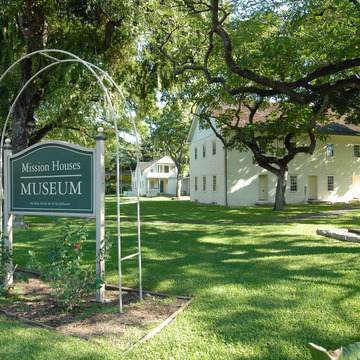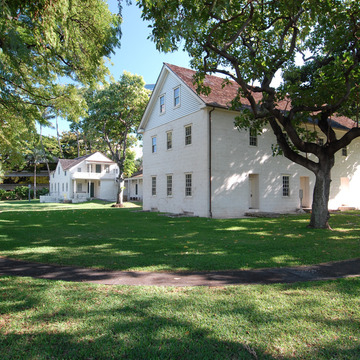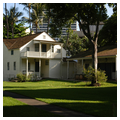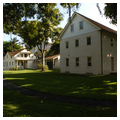A complex of four buildings occupying approximately one acre and enclosed by a low coral wall constitutes today's Mission Houses Museum. Three of the structures here date from the period 1821–1832. The fourth is a modern administration building, housing a gift shop and library. The three older buildings conjure fleeting images from the first half of the nineteenth century, when eighty-four men and one hundred women endeavored to spread the word and ways of Christianity to the Hawaiian people.
These tranquil structures now set amidst green lawns and mature trees, surrounded by the bustle of Honolulu, once stood in isolation on a dusty plain, serving as the headquarters for missionary efforts throughout the island chain. In 1863, the American Board of Commissioners for Foreign Missions declared Hawaii a Christian nation and ceased its operations in the Islands. During the decade or so before this withdrawal of support, the American Board transferred many of its properties, including these mission houses, into mission-associated hands. In 1851, the Cooke family, who occupied the frame house (OA61.1), purchased it and the adjoining single-story, coral-block building (OA61.2). A few years later, the two-story, coral-block house (OA61.3) became the property of the widowed Mrs. Chamberlain.
In 1907, the Hawaiian Mission Children's Society, an organization composed of missionary descendants, obtained a one-dollar, twenty-year lease on the two Cooke properties and undertook their restoration. In 1910, the society acquired the Chamberlain House, and fifteen years later, the heirs of the C. M. Cooke Estate deeded their houses to the group. The Hawaiian Mission Children's Society continues to operate the museum.











